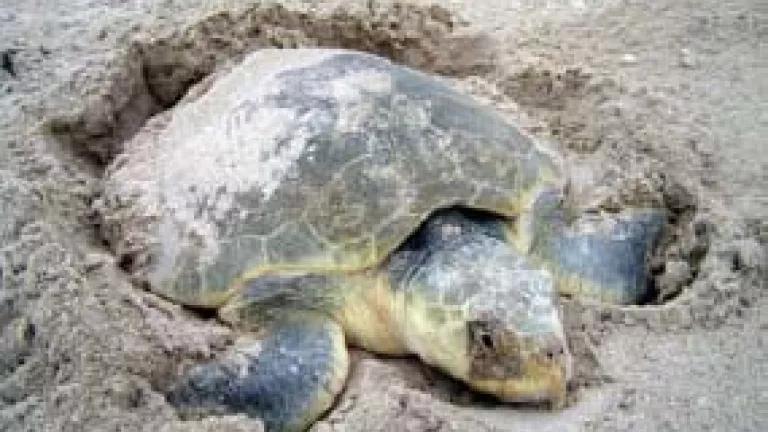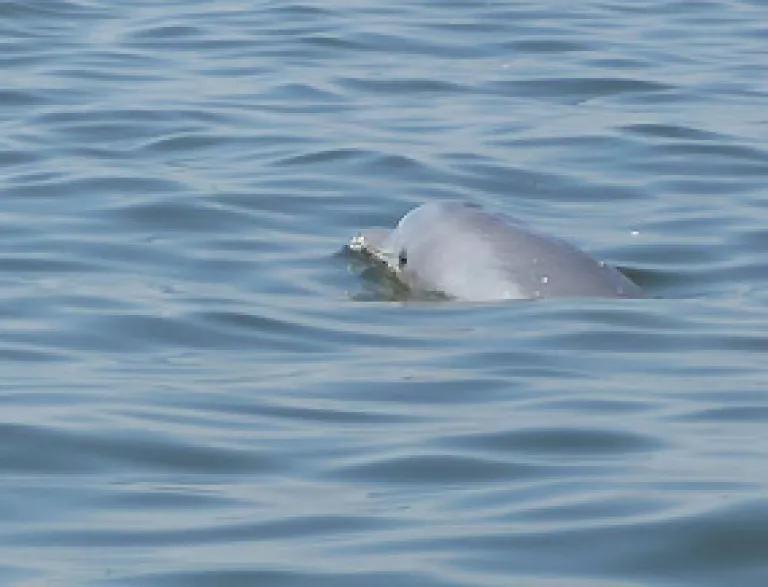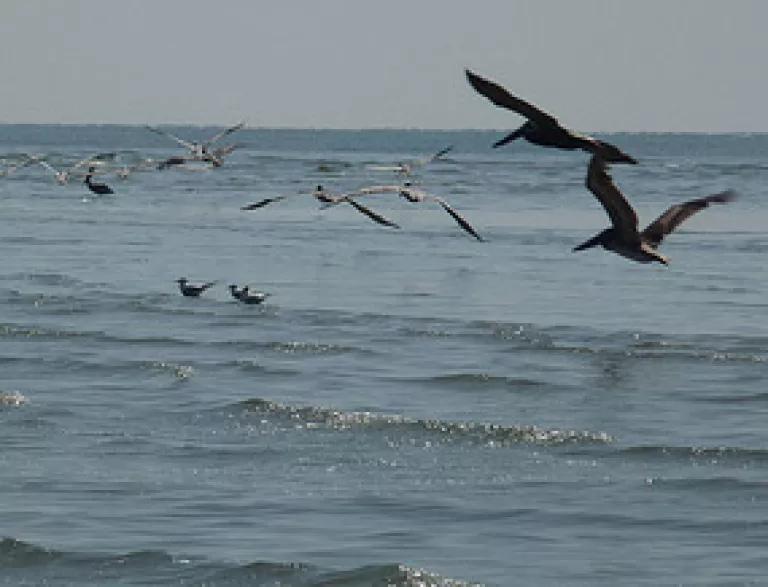
Ecologically, the Gulf of Mexico oil spill would seem to be on a collision course with spring. Nesting season has just begun for the myriad of migratory birds that return each year to the northern beaches and barrier islands, and the nesting season for sea turtles is rapidly approaching. Small populations of dolphins are calving nearshore, and virtually the entire western Atlantic stock of one of the world’s most prized (and endangered) commercial fish is in the Gulf this month to spawn. It’s hard to imagine a worse time of the year for what’s happening. Here’s a brief field guide.
1. Kemp’s ridley sea turtle
All five of the sea turtle species that inhabit the Gulf – Kemp’s ridley, leatherback, loggerhead, green, and hawksbill – are listed as endangered or threatened under U.S. law. But the endangered species of greatest concern is the Kemp’s ridley, sometimes called the “Gulf’s sea turtle” because it nests only in the western Gulf of Mexico. The entire Kemp’s ridley population is in the Gulf now, ready to spawn, and one of its foraging habitats is right in the middle of the spill. Overflights of the spill area on May 5 showed 30-50 sea turtles (we don’t know which species) in the spill or near it.
2. Bottlenose dolphins

As I wrote last week, bottlenose dolphins are among the Gulf’s most vulnerable marine mammals. The National Marine Fisheries Service has identified more than 30 distinct populations in the northern Gulf, ranging from Texas to Florida, and some consist of little more than a few dozen animals. Many of these tiny groups prefer coastal and inshore waters, the bays and passes and waterways that break up the shoreline – and right now they’re calving, bringing many of them closer in. Give their low abundance and coastal habitat, the spill could devastate some of these dolphin populations if it flows the wrong way.
3. Western Atlantic bluefin tuna
The western Atlantic bluefin tuna is one of the most highly valued commercial fish in the world, which has also made it one of the most endangered commercial fish in the world. It’s been depleted from years of commerce, is considered critically endangered by the IUCN, and, along with its eastern Atlantic counterpart, has been the focus of a thus-far unsuccessful U.S. effort to ban its sale in international trade. Every year, from mid-April to June, the entire population migrates into the Gulf and Florida Straits to spawn, and large numbers could be exposed particularly as the spill heads east to Florida.
4. Sharpnose sharks and friends
The Gulf hosts ten species of sharks considered threatened by the IUCN Red List, the global index of species in peril. Many of these species, like the sharpnose shark, are breeding right now, using the coastal waters of the northern Gulf as their nurseries. The nurseries include seagrass beds off the Chandeleur Islands in the Breton National Wildlife Refuge, which now seem practically surrounded by emulsified oil and sheen. Whale sharks, another threatened species, are filter feeders and could be affected by ingested oil.
5. Birds galore

The least tern is an endangered species whose nesting areas on Gulfport beaches will be threatened if oil comes ashore. (Oiling physically alters the feather structure resulting in hypothermia and an inability to properly forage and float.) The brown pelican is a seabird that was removed from the U.S. endangered species list last year despite its low reproductive rate; as my colleague Regan observed last week, its breeding season has just begun, and many pelican pairs are now busy incubating eggs. And numerous songbirds are migrating back to North America from the tropics these days, stopping at the barrier islands to rest and forage. Simply put, we have entered prime migrating and nesting season for Gulf Coast birds.
The spill couldn’t have come at a worse time for wildlife.
Photo credits: NPS Photo, NRDC, NRDC
